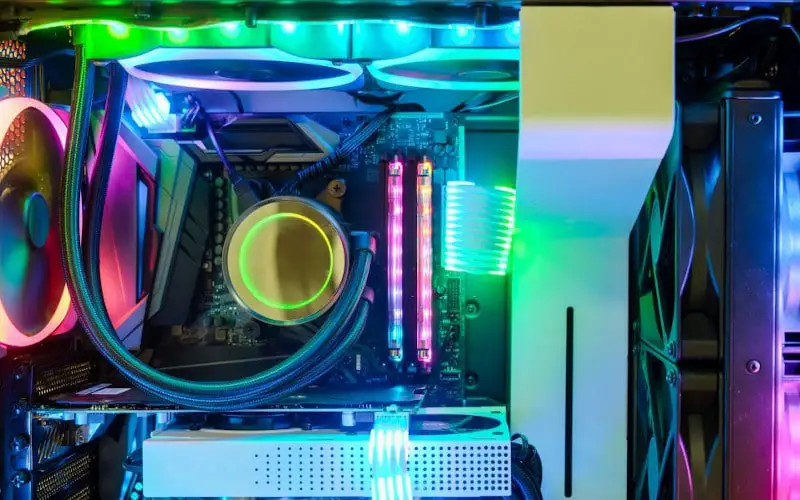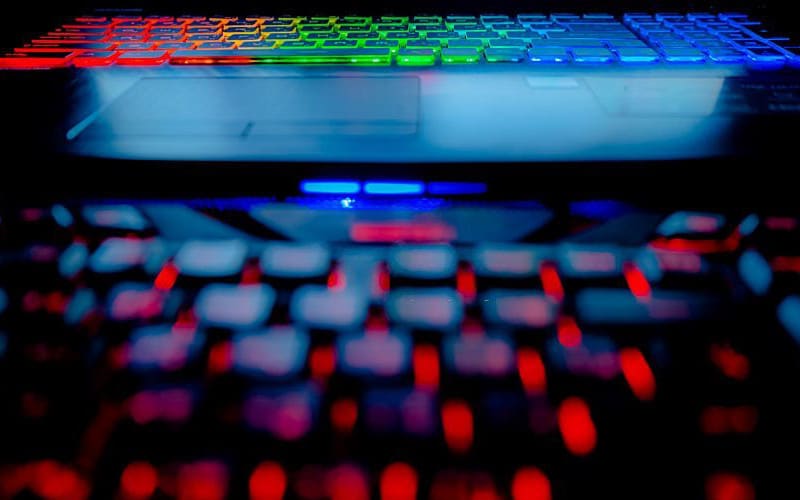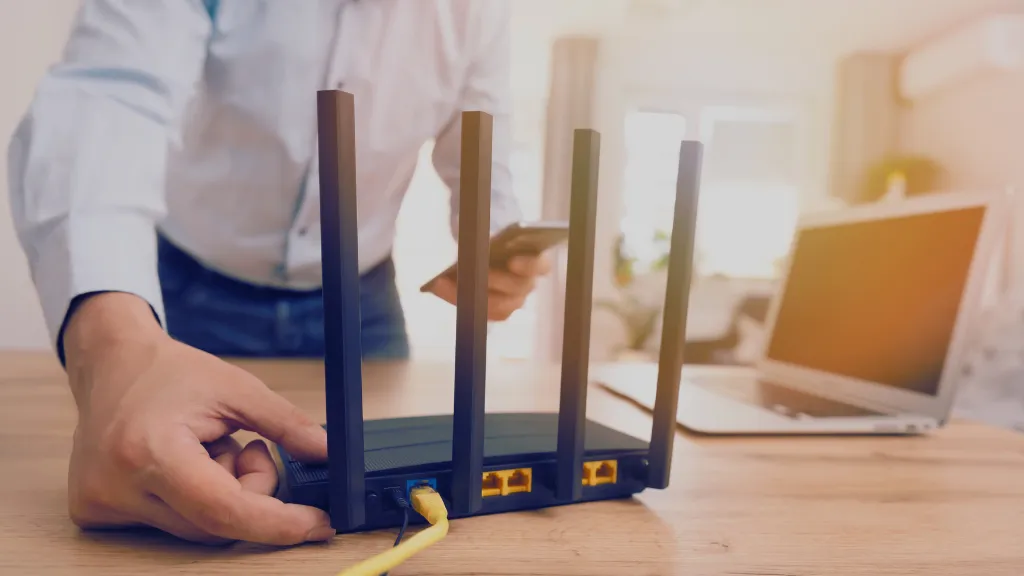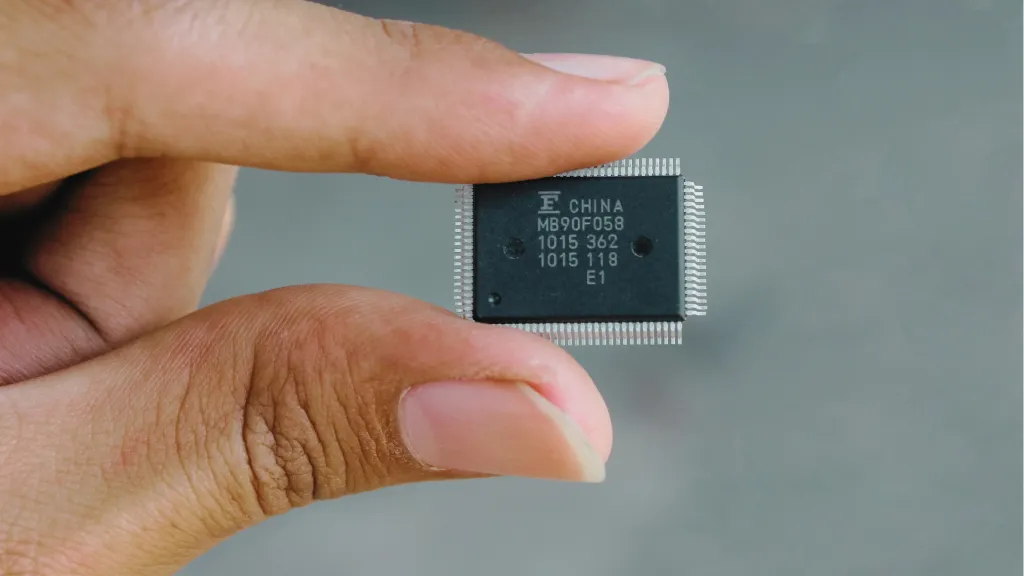If you have been listening to the unwanted noise from your computer, you may have realized that it is coming from the fans. This means that the GPUs are probably running hotter than they should.
You might have questions like, “What is a good GPU idle temp?”, “Is my computer’s fan too loud?” or “How do I find my GPU’s optimal idle temperature?”.
Many factors determine the temperature of your GPU but using a third-party program, you can get an idea about what is an excellent temperature to make sure that your computer is running at its highest efficiency.
A GPU’s room temperature influences how hot it gets, but clock speed and voltage are the biggest factors. A good idle GPU temp is not too cold, but it’s also not above the maximum safe temperature for your video card (which is set by the manufacturer).
But first thing first.
What Exactly is a GPU?
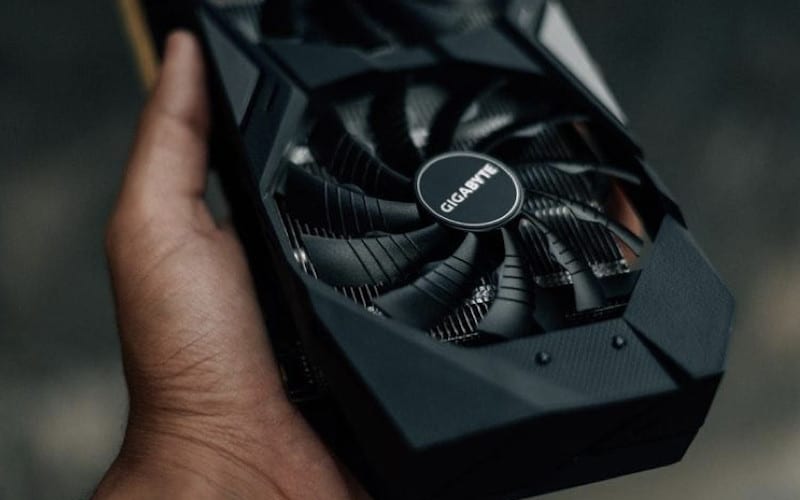
A GPU (graphics processing unit) is a single-chip processor that offloads 3D rendering from the CPU. GPUs can be found in most modern computers and are used for all 3D graphics rendering (in the case of game consoles like the Xbox One or PlayStation 4, GPUs are CPUs in addition to being GPUs).
The GPU in a standard desktop computer is between 50-100x more powerful than the CPU. In most cases, the graphics card is the source of noise, so if it is too loud or makes too much noise, you may have to replace it.
However, if the fan is not the problem, then maybe your cooling system needs a tune-up, or it may be that you need to do some upgrades (like adding a fan for extra cooling).
What Is a Good GPU Idle Temp?
A good GPU idle temp is around 30°C-50°C (86°F-122°F). This is for high-end NVIDIA graphics cards, but most modern GPUs will be similar in performance at this temperature.
So that you know for sure that this is the best temperature range, some manufacturers (like NVIDIA) offer custom tools to set your fan speed automatically depending on the temperature your card gets to.
This allows you to set a custom target temperature for your GPU, so the fan speed is adjusted accordingly, and the GPU stays as cool as possible without being too cold.
If your computer is overheating, or you have a laptop, and it’s getting too hot, then you might have to turn it off and let it cool down before using it again. You can monitor the temperature of your GPU and the other components on your computer with a free program called GPU-Z.
What is the Normal GPU Temperature When Gaming?
The video card temperature must be below 85°C (185°F). AMD and Nvidia GPUs should stay between 70°C-85°C (158°F-185°F) while gaming.
The normal CPU temperature when gaming is around 50°C-60°C (122°F-140°F). If your computer’s CPU is much hotter than this, it probably means that your computer is overworking or that you need to clean out the dust.
It might also mean that there is a problem with the fan and it needs to be replaced.
How To Check Your GPU Temperature?
Now that you know just what is a good GPU idle temp, how do you check on your computer’s temperature?
Follow these steps on Windows:
- Right-click on Desktop and select Personalize.
- Click on Display in the left column.
- Click on the graphics card you want to check.
- Take note of the Adapter Information, including what type it is (NVIDIA or AMD), how much Video RAM it has, and its driver version.
Follow these steps on Linux:
- Run the command “sudo fdisk -l”.
- Find your graphics cards in the list and note the Device ID.
- Using the command line interface, run “sudo lspci -v | grep VGA“.
- Switch to your web browser and locate your graphics card’s product page on nvidia.com or amd.com.
- Note the “Product Family,” “Product Name,” and “RAM” values listed.
- Visit the FAQ page of this article to calculate your idle temperature with those values.
Follow these steps on Ubuntu:
- Run the command “cat /var/log/Xorg.0.log | grep -i Warning“.
- Look for a line that says “GPU working normally“.
- This can help you check if your GPU is faulty.
Follow these steps on Mac:
- Open an application called “Terminal“.
- Run the command “system_profiler SPDisplaysDataType | grep -B 4 Resolution“.
- It should list the current resolution, along with your graphics card model.
- You can then visit nvidia.com or amd.com to find your product name in the list of supported model.
- Input that information into this article’s formula to determine your GPU idle temperature.
Built-In Windows 10 Feature:
- You can also use your Windows 10 computer’s “Settings” app.
- Go to “System,” then “Display“.
- You should see a list of connected monitors with your current priority selection.
- Click on the monitor that is currently set as “Connected” and select a different priority from the list above.
- Click “Advanced Display Settings” and select the “Display adapter properties” menu.
- Now, you should see a list of your graphics cards, your drivers, and your monitor resolutions.
Third-Party Monitoring Tools:
- You can use third-party monitoring tools, like HWINFO or Speccy to check your system’s configuration.
- These are great if you want to check other components on your computer.
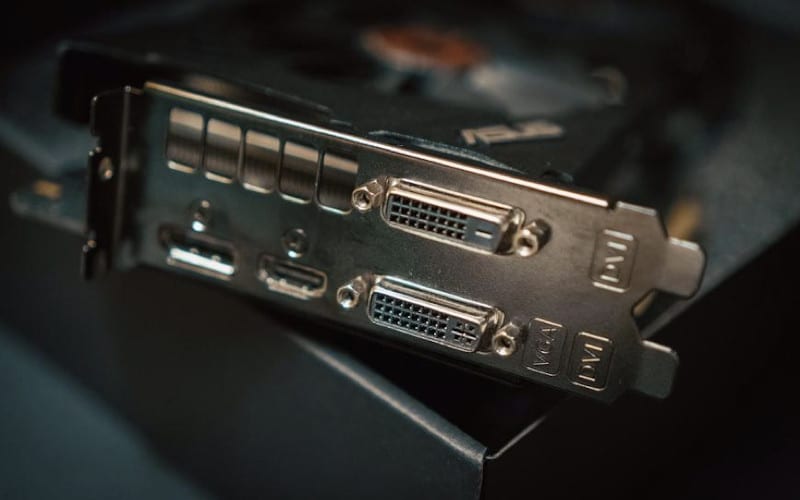
How To Lower GPU Temperature?
The following are some methods that can help you lower your GPU temperature:
| Replace thermal paste | You should clean off your computer’s old thermal paste with a lint-free cloth or alcohol wipes and then apply new thermal paste. This will help your computer’s heat sink and fan suck in the air more efficiently. |
| Change your thermal paste | You can try applying a new type of thermal paste, like Arctic Silver 5. This can help with problems like bubbles in the paste, which will cause hot spots. |
| Increase fan speed | You should also change the fan’s speed, which can be done by using a third-party program or simply through your computer’s control panel. |
| Increase airflow | Check to make sure that your computer’s fan is appropriately connected and that no dust particles are blocking it. |
| Overlocking the GPU | If your computer’s BIOS allows it, you can try overclocking the GPU. In most cases, this will help lower your temperatures by a decent amount, but you should know that overclocking can stress components like your power supply, motherboard, and even your CPU. |
| Upgrade the GPU | You can always upgrade your GPU and this will help lower the temperature, but it is costly and not recommended for everyone. But if you have the budget and you feel like your current GPU can’t handle your computer’s performance needs, then upgrading is the way to go. |
| Upgrade your computer | If you want to upgrade the GPU and also get a performance boost, then you should consider upgrading your computer as well. The more powerful your computer’s processor is, the more tasks it can handle. However, this option might not be a great choice if you do not need a performance boost. |
| Change your power plan | You can also change your computer’s power management settings, which you can access through the Control Panel. You can set it up to run in maximum performance mode, requiring more power and sending more hot air out of the CPU. |
| Clean the fan | You should periodically clean your computer’s fan with compressed air to remove dust build-up. This can also help increase your GPU’s longevity since dust build-up can cause hot spots. |
| Change your graphics card | You can always consider upgrading to a new graphics card. This can be expensive, but modern graphics cards are usually more energy-efficient. This way, you can also consider changing your power supply unit (PSU) since the new graphics card will require more watts. |
| Change your air filter | You should also change your computer’s air filter or switch to an external fan. This will allow for proper ventilation and heat exchange within your computer’s case. |
| Do a full system shut down | You should do a full system shut down and check for any problems. If your computer’s problem doesn’t go away, you should consider either taking it to a professional or simply purchasing a new graphics card. |
How Do I Fix My GPU From Overheating?
The first thing you should do is make sure that your computer’s cooling system is working correctly.
- Run a third-party fan-testing software:
As written before, you can use a third-party fan-testing software, like HWINFO or Speccy, to check your system’s configuration.
- Clean your GPU’s fan:
You should periodically clean your computer’s fan with compressed air to remove dust build-up. This can also help increase your GPU’s longevity since dust build-up can cause hot spots.
- Increase GPU fan speed:
You should also increase your GPU’s fan speed, which can be done by using a third-party program or simply through your computer’s control panel. You should set the fan to run at its maximum speed.
- Clean your computer:
It would be best to clean out the dust from all components on your motherboard or CPU. This can make a huge difference in your computer’s temperature. You can even use a can of compressed air to blow out dust from the components on your motherboard.
- Check your computer for malware:
You should also run a free system scan with Malwarebytes to check for any malware causing the problems.
- Unscrew heatsink:
You should unscrew your computer’s heatsink to make sure that it has good contact with the CPU. You can then apply a new thermal paste and screw the heatsink back in place.
- Disconnect GPU:
You can also disconnect your computer’s graphics card and attach it again. This way, you might find out whether or not the graphics card is causing overheating problems. If the overheating goes away, you should consider repairing or replacing your graphics card.
- Check your room temperature:
Keep in mind that the ambient temperature of the room you’re using your computer can affect how hot your computer components run.
- Increase your system RAM:
It would help increase your computer’s system RAM. This can allow for better performance, and it can keep your CPU cooler if there is less memory swapping. You should also consider upgrading your computer’s motherboard, allowing for better airflow.
If the above-mentioned tips don’t work for you, watch this explanatory video for a better understanding:
How Warm Should a GPU Get?
Ideally, your GPU should stay below 80°F or 32.2°C. You need to ensure that your computer’s cooling system is working correctly. This can vary depending on your graphics card’s model and the other components in your computer, so this is just a basic guideline.
You can use third-party fan-testing software to check your system’s configuration and detect any problems.
Should GPU Fans Always Be Running?
Ideally, your GPU’s fan shouldn’t always be running at top speed. However, it is usually necessary for your fan to run at high speed when your GPU is under heavy load.
This is because the higher fan speeds can help to cool down your graphics card and prevent it from overheating. However, you should also ensure that your computer’s cooling system is working correctly so that your CPU doesn’t run too hot.
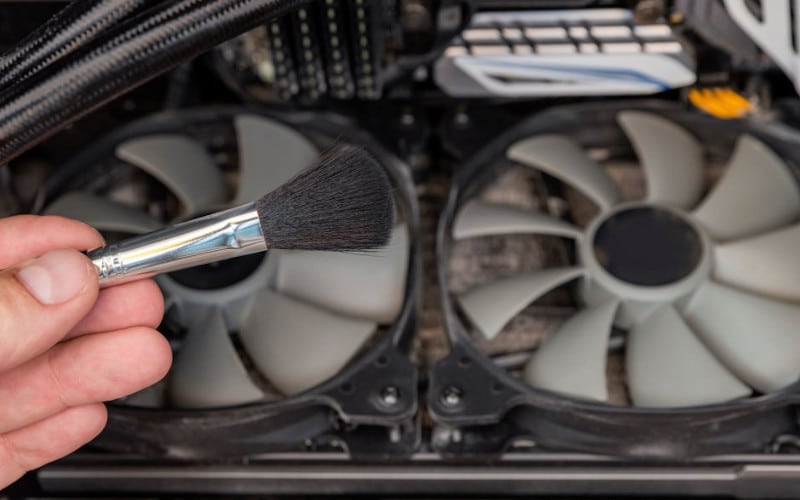
How to Avoid AMD and Nvidia Graphics Cards From Overheating?
You should keep your graphics card’s fan running at high speed when it is under heavy load. This can help to prevent your graphics card from overheating. Also, remember that VR (virtual reality) applications require high-performance hardware like graphics cards.
Does GPU Temperature Affect Lifespan?
Higher GPU temperatures can reduce your graphics card’s lifespan. However, recent advances in technology make it harder to damage a graphics card by overheating it. The computer automatically lowers the graphics card’s clock speed when it gets too warm.
What is the Maximum GPU Temperature Range?
The maximum, or peak, GPU temperature is 95°C (203°F). The graphics card is more likely to be stable at lower temperatures and provide you with a good performance level. That being said, modern graphics cards can handle a temperature of up to 95°C (203°F) without a large reduction in performance.
What is the Nvidia GPU Temperature Range?
The Nvidia brand boasts that its graphics cards can operate well at temperatures up to 110°C. Nvidia GPUs operate at safe temperatures as long as your GPU fans are working properly. You should still make sure that your computer’s cooling system is functional.
Why Do GPU 100% Usage And Temperature Matter?
GPU utilization and temperature can matter for a few reasons. Firstly, if the GPU is running at full capacity, it may not be able to handle additional tasks, resulting in a decrease in performance. Additionally, high temperatures can cause the GPU to throttle or even fail, which can lead to system instability.
Your computer’s temperature can affect its overall performance. This is because your computer will try to manage heat by reducing your GPU’s clock speed or frequency when it gets too hot.
Conclusion
You can keep your GPU cool by following these tips. That being said, you should also consider upgrading your computer’s cooling system to ensure that it is working properly. This will help keep your GPU’s temperature down, and it can also help prevent any other system components from overheating.
Keep in mind that your computer’s cooling system may get clogged with dust over time. This can reduce airflow and prevent your fans from operating properly. You should make sure that your computer’s cooling system is working properly, and check for any malware that might be causing problems.
There are many things you can do to keep your GPU from overheating. You should make sure that your computer’s cooling system is functional, turn up your computer’s fan speed, and clean out dust from all of the components on your motherboard. You should also consider upgrading your computer’s motherboard if you can.

